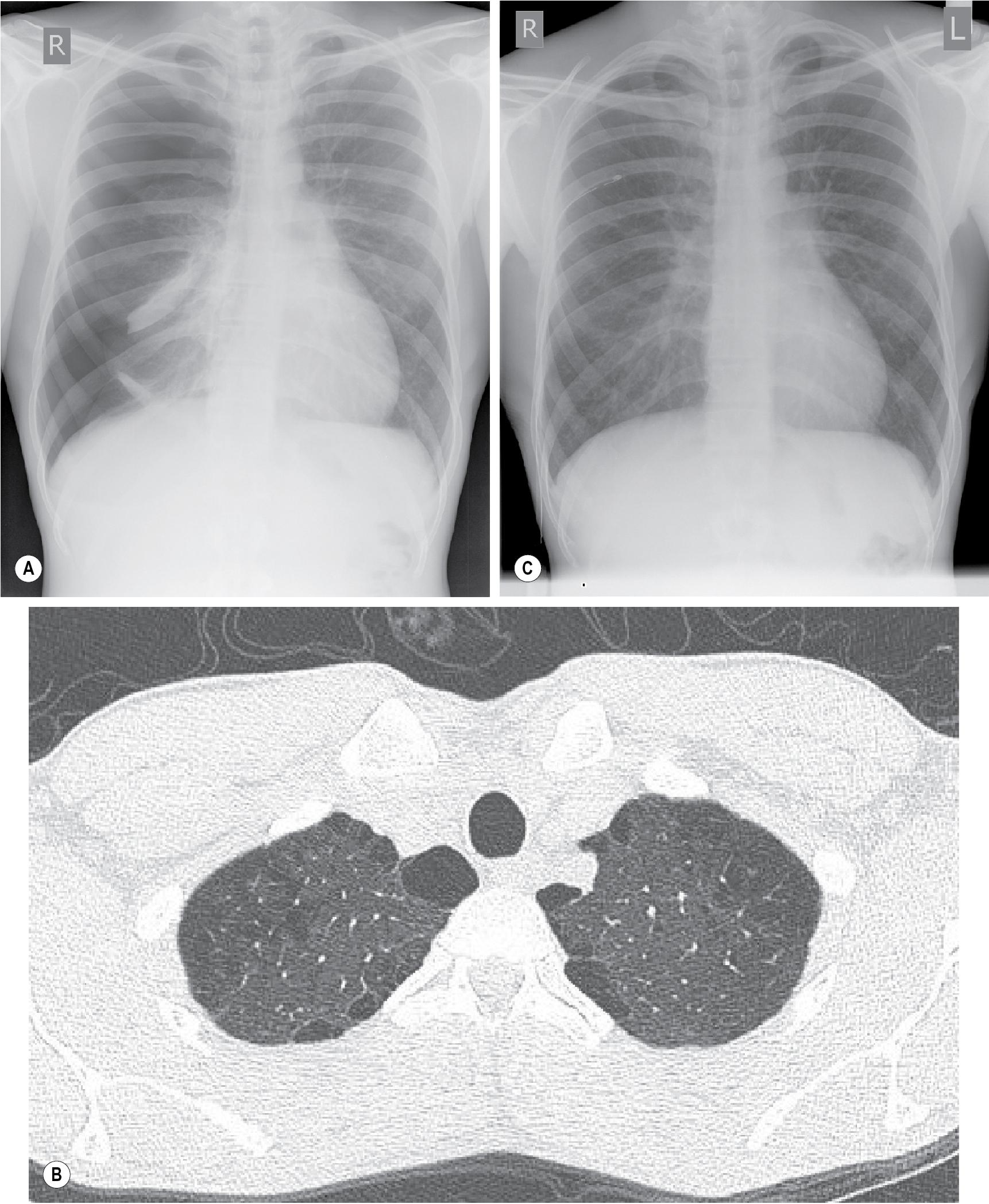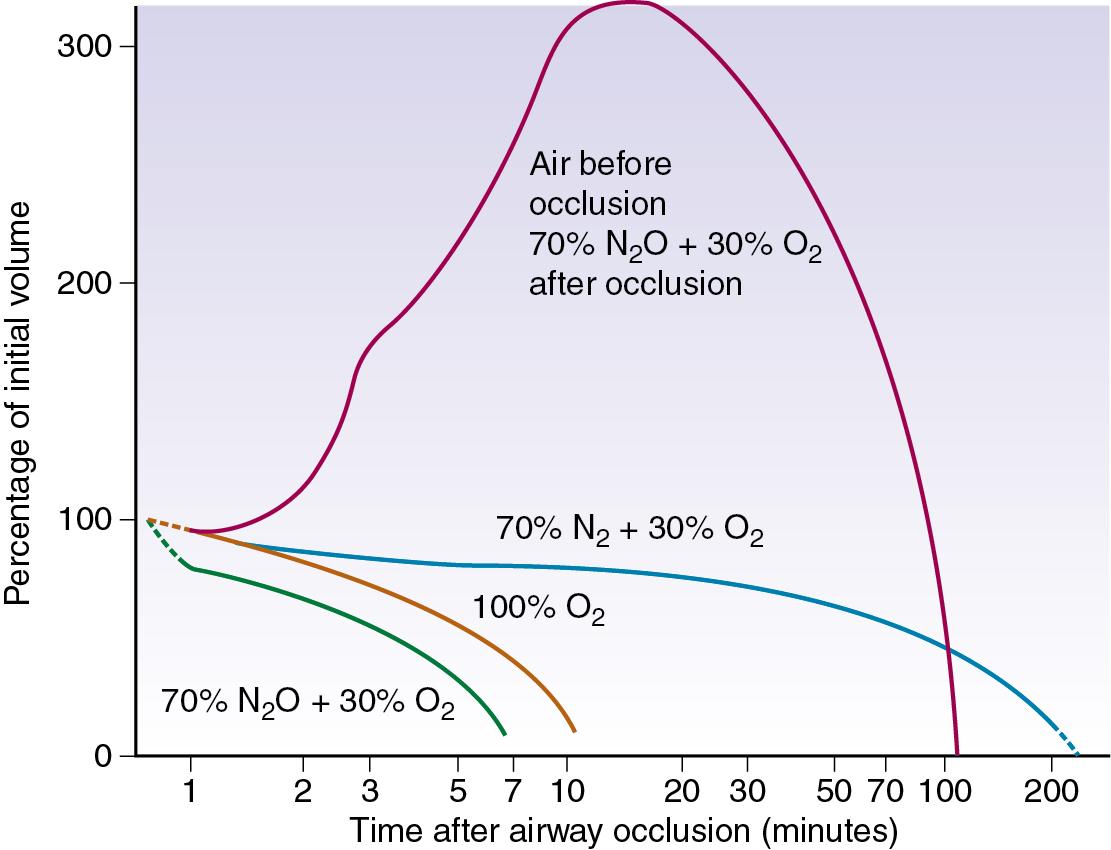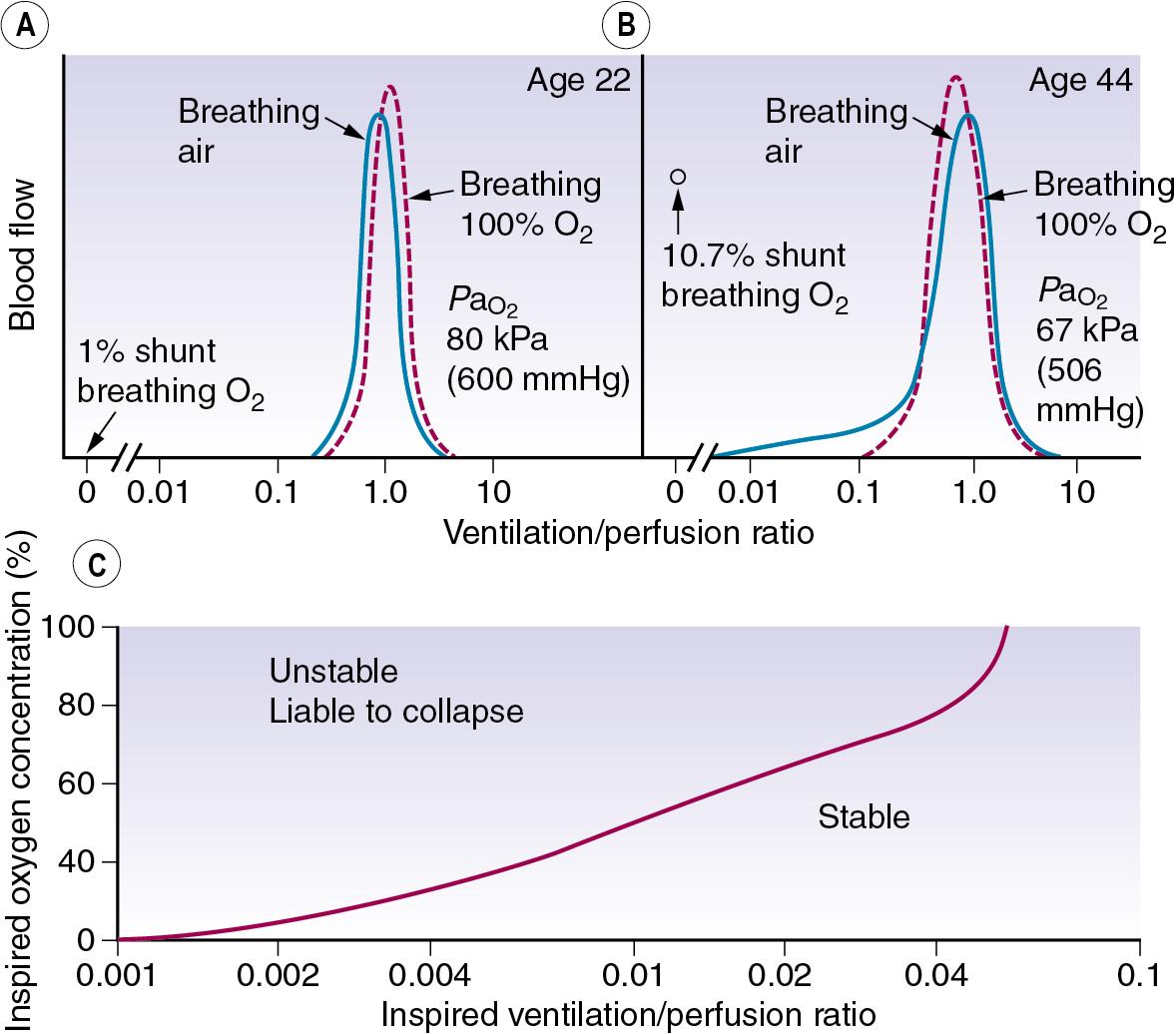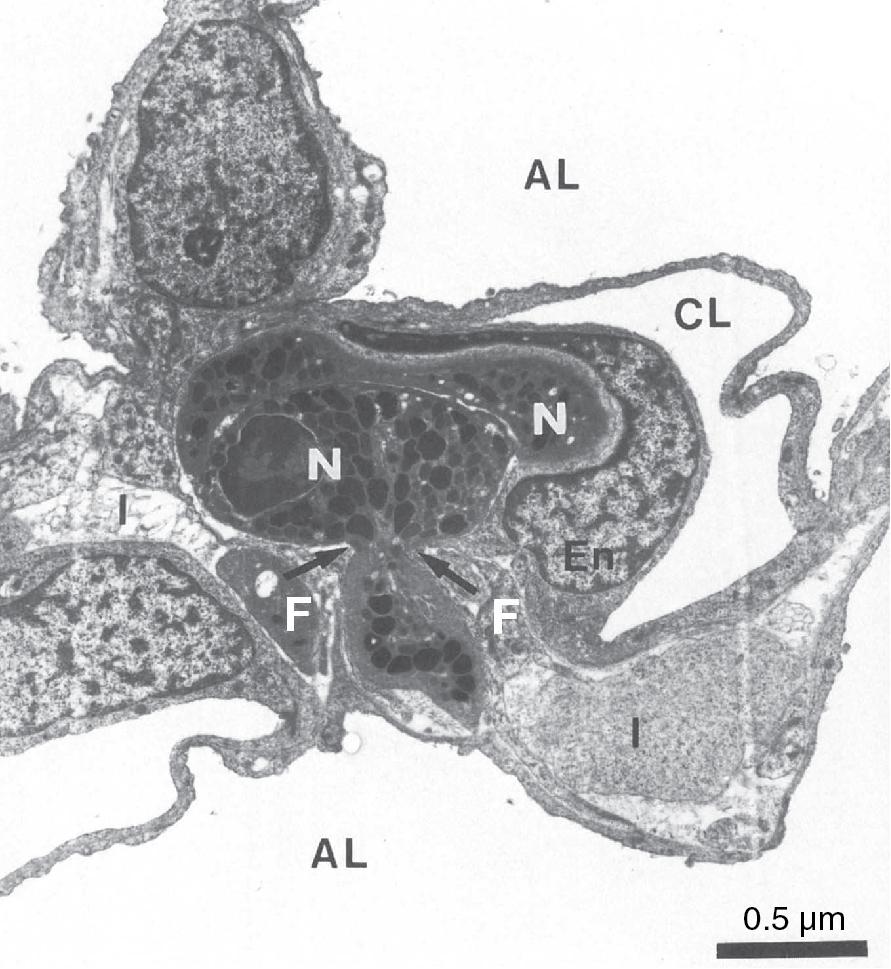Physical Address
304 North Cardinal St.
Dorchester Center, MA 02124
Lung collapse occurs either from compression of lung tissue or by absorption of gas from lung units with occluded or severely narrowed airways.
Many forms of interstitial lung disease exist, varying from purely inflammatory conditions (alveolitis) to those involving progressive fibrosis with minimal lung inflammation.
Lung fibrosis arises from an imbalance between the cellular systems responsible for inflammation and tissue repair.
Lung cancer is a common malignancy which is difficult to treat effectively and is mostly preventable by avoiding tobacco smoke and radon exposure.
Pleural effusion, infection and pneumothorax remain common occurrences, and can all impair respiratory function in the short or long term.
Pulmonary collapse may be defined as an acquired state in which the lungs or part of the lungs become airless. Atelectasis is strictly defined as a state in which the lungs of a newborn have never been expanded, but the term is widely used as a synonym for regional pulmonary collapse.
Collapse may be caused by two different mechanisms. The first of these is loss of the forces opposing the elastic recoil of the lung, which then decreases in volume to the point at which airways are closed and gas is trapped behind the closed airways. The second is obstruction of airways at normal lung volume, which may be attributed to many different causes. This also results in trapping of gas behind the obstructed airway. Whatever the cause of the airway closure, there is rapid absorption of the trapped gas because the total partial pressure of gases in mixed venous blood is always less than atmospheric (see Table 25.2 ). This generates a subatmospheric pressure more than sufficient to overcome any force tending to hold the lung expanded.
| Group | Mechanism of Action | Toxicity | Examples |
|---|---|---|---|
|
|
|
|
|
|
|
|
|
|
|
|
|
|
|
|
|
|
|
|
Pulmonary collapse during anaesthesia is described in Chapter 21 .
The lungs are normally prevented from collapse by the outward elastic recoil of the rib cage and any resting tone of the diaphragm. The pleural space normally contains no gas, but, if a small bubble of gas is introduced, its pressure is subatmospheric (see Fig. 2.4 ). Pulmonary collapse because of loss of forces opposing lung retraction may be considered as follows.
Voluntary reduction of lung volume . It seems unlikely that voluntary reduction of lung volume below closing capacity will cause overt collapse of the lung in a subject breathing air. However, in older subjects, there is an increase in the alveolar/arterial P o 2 gradient, suggesting trapping of alveolar gas (see Fig. 21.10 ).
Excessive external pressure. Ventilatory failure is the more prominent aspect of an external environmental pressure in excess of about 6 kPa (60 cmH 2 O), which is not communicated to the airways (page 319). However, some degree of pulmonary collapse could also occur, and this is a normal consequence of the great depths attained by diving mammals while breath holding (page 311). An approximately normal lung volume is maintained during conventional diving operations when respired gas is maintained at the surrounding water pressure, although this does not occur with surface diving or snorkelling (page 221).
Loss of integrity of the rib cage. Multiple rib fractures may impair the elastic recoil of the rib cage to the point at which partial lung collapse results. This depends entirely on the extent of the injury to the rib cage, but multiple adjacent ribs fractured in two places will usually result in collapse. However, extensive trauma to the rib cage also causes interference with the mechanics of breathing, which is generally more serious than collapse.
Intrusion of abdominal contents into the chest. Extensive atelectasis results from a congenital defect of the diaphragm. Abdominal contents may completely fill one-half of the chest with total atelectasis of that lung. In adults, similar changes may occur with a large hiatus hernia, or ascites may push the diaphragm into the thoracic cavity. Paralysis of one side of the diaphragm causes the diaphragm to lie higher in the chest, with a tendency to basal collapse on that side.
Space occupation of the pleural space. Air introduced into the pleural space (pneumothorax) reduces the forces opposing retraction of the lung, and this is a potent cause of collapse (see Fig. 30.5 , A ). The same effect occurs when the pleural space is occupied by an effusion, empyema or haemothorax. Pleural disease is discussed on page 360 et seq.

Hypergravity. Increased pressure on dependent lung regions as a result of the extreme gravitational forces experienced in military aircraft also causes lung collapse.
Absorption of alveolar gas trapped beyond obstructed airways may be the consequence of reduction in lung volume by the mechanisms described previously. However, it is the primary cause of collapse when there is total or partial airway obstruction at normal lung volume. Obstruction is commonly attributed to secretions, pus, blood or tumour, but may be caused by local bronchospasm or airway oedema.
Gas trapped beyond the point of airway closure is absorbed by the pulmonary blood flow. The total of the partial pressures of the gases in mixed venous blood is always less than atmospheric (see Table 25.2 ), although pressure gradients for the individual component gases between alveolar gas and mixed venous blood may be quite different.
If the patient has been breathing 100% oxygen before obstruction the alveoli will contain only oxygen, carbon dioxide and water vapour. Because the last two together normally amount to less than 13.3 kPa (100 mmHg), the alveolar P o 2 will usually be in excess of 88 kPa (660 mmHg). However, the P o 2 of the mixed venous blood is unlikely to exceed about 6.7 kPa (50 mmHg), so the alveolar/mixed venous P o 2 gradient will be of the order of 80% of an atmosphere. Absorption collapse will thus be rapid, and there will be no nitrogen in the alveolar gas to maintain inflation. This has important implications during anaesthesia, when 100% oxygen is commonly administered (page 251).
The situation is much more favourable in a patient who has been breathing air, as most of the alveolar gas is then nitrogen, which is at a partial pressure of only about 0.5 kPa (4 mmHg) below that of mixed venous blood. Alveolar nitrogen partial pressure rises above that of mixed venous blood as oxygen is absorbed, and eventually the nitrogen will be fully absorbed. Collapse must eventually occur, but the process is much slower than in the patient who has been breathing oxygen. Fig. 30.1 shows a computer simulation of the time required for collapse with various gas mixtures. Nitrous oxide/oxygen mixtures may be expected to be absorbed almost as rapidly as 100% oxygen. This is partly because nitrous oxide is much more soluble in blood than nitrogen, and partly because the mixed venous partial pressure of nitrous oxide is usually much less than the alveolar partial pressure, except after a long period of inhalation.

When the inspired gas composition is changed after obstruction and trapping occur, complex patterns of absorption may ensue. The inhalation of nitrous oxide, after airway occlusion has occurred while breathing air, results in temporary expansion of the trapped volume ( Fig. 30.1 ). This is caused by large volumes of the more soluble nitrous oxide passing from blood to alveolus in exchange for smaller volumes of the less soluble nitrogen passing in the reverse direction. This phenomenon also applies to any closed airspace in the body, such as closed pneumothorax, gas emboli, bowel and the middle ear with a blocked pharyngotympanic (Eustachian) tube. It is potentially dangerous and may contraindicate the use of nitrous oxide as an anaesthetic.
It needs to be stressed that the forces generated by the absorption of trapped gases are very large. The total partial pressure of gases in mixed venous blood is normally 87.3 kPa (655 mmHg). The corresponding pressure of the alveolar gases is 95.1 kPa (713 mmHg), allowing for water vapour pressure at 37°C. The difference, 7.8 kPa (58 mmHg or 78 cmH 2 O), is sufficient to overcome any forces opposing recoil of the lung. Absorption collapse after breathing air may therefore result in drawing the diaphragm up into the chest, reducing rib cage volume or displacing the mediastinum. If the patient has been breathing oxygen the total partial pressure of gases in the mixed venous blood is barely one-tenth of an atmosphere, and absorption of trapped alveolar gas generates enormous forces.
Absorption collapse may still occur in the absence of total airway obstruction, provided the ventilation/perfusion ( ![]() ) ratio is sufficiently low. Older subjects, as well as those with a pathological increase in scatter of
) ratio is sufficiently low. Older subjects, as well as those with a pathological increase in scatter of ![]() ratios, may have substantial perfusion of areas of lung, with
ratios, may have substantial perfusion of areas of lung, with ![]() ratios in the range of 0.01 to 0.1. This shows as a characteristic ‘shelf’ in the plot of perfusion against
ratios in the range of 0.01 to 0.1. This shows as a characteristic ‘shelf’ in the plot of perfusion against ![]() ( Fig. 30.2 ). These grossly hypoventilated areas are liable to collapse if the patient breathes oxygen ( Fig. 30.2 , B ). If the
( Fig. 30.2 ). These grossly hypoventilated areas are liable to collapse if the patient breathes oxygen ( Fig. 30.2 , B ). If the ![]() ratio is less than 0.05, ventilation even with 100% oxygen cannot supply the oxygen that is removed (assuming the normal arterial/mixed venous oxygen content difference of 5 mL.dL −1 ). As the
ratio is less than 0.05, ventilation even with 100% oxygen cannot supply the oxygen that is removed (assuming the normal arterial/mixed venous oxygen content difference of 5 mL.dL −1 ). As the ![]() ratio decreases below 0.05, so the critical inspired oxygen concentration necessary for collapse also decreases ( Fig. 30.2 , C ). The flat part of the curve between
ratio decreases below 0.05, so the critical inspired oxygen concentration necessary for collapse also decreases ( Fig. 30.2 , C ). The flat part of the curve between ![]() ratios of 0.001 and 0.004 means that small differences in inspired oxygen concentration in the range of 20% to 30% may be very important in determining whether collapse occurs or not. In lung regions with these very low
ratios of 0.001 and 0.004 means that small differences in inspired oxygen concentration in the range of 20% to 30% may be very important in determining whether collapse occurs or not. In lung regions with these very low ![]() ratios collapse is therefore likely to occur, but still not inevitable—a modelling study suggests that lung recoil is crucial for maintaining airway patency even with apnoeic ventilation of the alveoli.
ratios collapse is therefore likely to occur, but still not inevitable—a modelling study suggests that lung recoil is crucial for maintaining airway patency even with apnoeic ventilation of the alveoli.

The diagnosis may be made on physical signs of decreased air entry and chest dullness, but reliance is usually placed on chest radiography. Pulmonary opacification is seen, along with indirect signs of thoracic volume loss, such as displacement of interlobular fissures, raised diaphragms and displaced hilar or mediastinal structures. , In the upright position, collapse is commonest in the basal segments, often concealed behind the cardiac shadow unless the exposure is appropriate. Areas of atelectasis are clearly seen with computed tomography (CT; see Fig. 21.9 ).
Collapse results in a reduction in pulmonary compliance, but the value of this in diagnosis is limited by the wide scatter of normal values. A sudden reduction in compliance may give an indication of collapse, provided, of course, that control measurements were available before collapse. Collapse also reduces the functional residual capacity and arterial P o 2 . However, in a patient with impaired oxygenation a reduction in arterial P o 2 cannot distinguish between the three very common conditions of collapse, consolidation or oedema of the lungs.
Therapy depends on the physiological abnormality. Factors opposing the elastic recoil of the lung should be removed wherever possible. For example, pneumothorax, pleural effusion and ascites may be corrected. In other cases, particularly impaired integrity of the chest wall, it may be necessary to treat the patient with artificial ventilation. Reexpansion of collapsed lung often requires high pressures to be applied (page 251), but it is usually possible to restore normal lung volume.
When collapse is caused by regional airway obstruction, the most useful methods in both treatment and prevention are by chest physiotherapy (page 375), combined when necessary with tracheobronchial toilet, through either a tracheal tube or a bronchoscope.
Voluntary maximal inspirations are effective in clearing areas of absorption collapse and this manoeuvre is the basis of the ‘incentive spirometer’, which is used to prevent postoperative lung collapse.
With artificial ventilation a logical approach is hyperinflation of the chest or an artificial ‘sigh’. Some ventilators were designed to provide an intermittent ‘sigh’, but evidence of its efficacy was never found. Current strategies to prevent pulmonary collapse during artificial ventilation are described in Chapter 32 .
Inflammation of areas of lung parenchyma, usually because of infection, can lead to the accumulation of exudate within the alveoli and small airways, causing consolidation. Areas of consolidation may be patchy, and referred to as bronchopneumonia, or confined to discrete areas of the lung, forming lobar pneumonia. Pulmonary collapse frequently occurs in conjunction with pneumonia as a result of airway narrowing in surrounding lung areas. Clinical features of pyrexia, cough and dyspnoea occur with signs of consolidation such as bronchial breathing, chest dullness and inspiratory crackles, although physical signs may be absent in bronchopneumonia. Diagnosis again relies on chest radiography, where consolidation appears as pulmonary shadowing, sometimes accompanied by an ‘air bronchogram’. With resolution of the infection, cough becomes more productive, and the lung returns to normal within a few weeks.
The most common cause of community-acquired pneumonia is the Streptococcus pneumoniae (pneumococcus) bacterium which is responsible for around one-third of cases worldwide. Vaccination programmes against some serotypes of bacteria that cause pneumonia, and improved testing for viruses may be leading to an increased recorded incidence of viral pneumonia. , Recent years have seen the emergence of some particularly virulent viral pneumonias, the latest of which are Middle East respiratory syndrome and COVID-19 ( Co rona vi rus d isease 2019). The coronaviruses responsible are found in animals and mutate frequently, allowing them to cross host species to become highly contagious to humans, causing a rapidly progressive and lethal pneumonia in some victims.
Patients with pneumonia are commonly hypoxaemic. Consolidated areas of lung behave in a similar fashion to collapse, forming an intrapulmonary shunt through which mixed venous blood flows. In addition, there is an increase in areas with low ![]() ratios (<0.1), but the contribution of these areas to impaired oxygenation is believed to be small because of hypoxic pulmonary vasoconstriction. Administration of oxygen to patients with pneumonia causes a further widening of the scatter of
ratios (<0.1), but the contribution of these areas to impaired oxygenation is believed to be small because of hypoxic pulmonary vasoconstriction. Administration of oxygen to patients with pneumonia causes a further widening of the scatter of ![]() ratios, implying a reduction in hypoxic pulmonary vasoconstriction, but nevertheless results in a considerable improvement in arterial P o 2 . Compared with collapsed lung, consolidation is commonly associated with a worse pulmonary shunt and therefore more severe hypoxia. Many of the inflammatory mediators released as part of the response to infection act as local pulmonary vasodilators, in effect overriding hypoxic pulmonary vasoconstriction.
ratios, implying a reduction in hypoxic pulmonary vasoconstriction, but nevertheless results in a considerable improvement in arterial P o 2 . Compared with collapsed lung, consolidation is commonly associated with a worse pulmonary shunt and therefore more severe hypoxia. Many of the inflammatory mediators released as part of the response to infection act as local pulmonary vasodilators, in effect overriding hypoxic pulmonary vasoconstriction.
Airway inflammation was described in detail in Chapter 28 . Invasion of the lower respiratory tract with viruses and bacteria leads to further inflammatory changes characterized by migration of neutrophils from the circulation into the lung tissue. Depending on the pathogen involved, the stimulus for this migration may originate from the lung epithelial cells or alveolar macrophages. Chemokines released from these cells initiate neutrophil margination, and a range of proinflammatory cytokine pathways begin. Once in the lung tissue and activated, neutrophils are highly effective killers of the invading pathogen (page 368). As part of this process an inflammatory exudate develops leading to consolidation of the lung tissue. The exudate is a complex mixture of invading organisms, inflammatory cells (dead and alive), immunoglobulins and other immune mediators, fluid transudate from increased capillary permeability and products resulting from destruction of lung tissue as a result of protease activity.
Before a neutrophil can contribute to the inflammatory response it must stick to the blood vessel wall (margination), migrate across the endothelium, interstitium and epithelium and become activated, ready to contribute to pathogen removal (see Fig. 31.2 ). These activities are controlled by an extensive series of cytokines in a very similar fashion to airway inflammation (see Fig. 28.2 ). Lymphocytes again play an important role, but in parenchymal inflammation macrophages have an important control function instead of the eosinophils and mast cells involved in airway inflammation.
Neutrophil margination has been extensively studied in the systemic circulation. Selectins expressed on the surface of endothelial cells transiently bind the neutrophil causing it to roll along the blood vessel wall. Eventually, different adhesion molecules on the endothelial cell (e.g., intercellular adhesion molecule-1) bind to specific receptors on the neutrophil surface (e.g., β 2 -integrins CD11/CD18), causing a firmer adhesion to the endothelium. Once ‘caught’ by the endothelial cell, cytokines are released, and neutrophil activation begins. The way in which neutrophils are marginated in the lung differs from elsewhere in the body. Adhesion to endothelial cells occurs predominantly in the pulmonary capillary, rather than in venules as in the systemic circulation. Selectin-induced rolling of neutrophils may not occur. Adhesion is facilitated by a slow transit time for neutrophils across pulmonary capillaries. Human neutrophils are of similar size to red blood cells, but are much less deformable, so neutrophils take up to 120 seconds to traverse a pulmonary capillary compared with less than 1 seconds for a red blood cell. Inflammatory mediators may cause changes to the biomechanical properties of neutrophils, in particular, a stiffening of the cell that will further impede its movement through the pulmonary capillary. Once adhered to the pulmonary capillary wall neutrophils may become flattened, leaving some of the capillary lumen available for blood flow. In this position, emigration into the pulmonary tissue begins, and the neutrophil moves through small holes in the capillary basal laminae, guided by chemokines released from epithelial cells and possibly assisted by fibroblasts in the interstitial space ( Fig. 30.3 ).

Become a Clinical Tree membership for Full access and enjoy Unlimited articles
If you are a member. Log in here